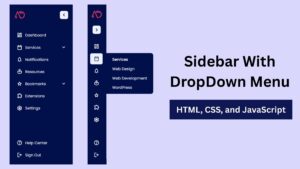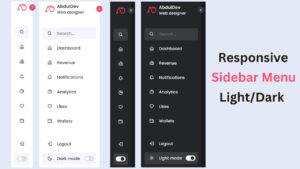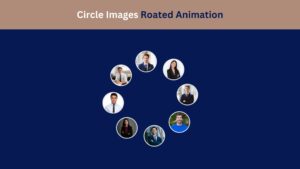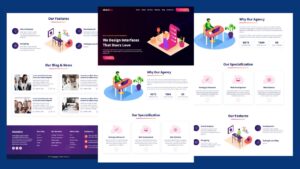
Get Familiar with These 7 Types of Graphic Designs
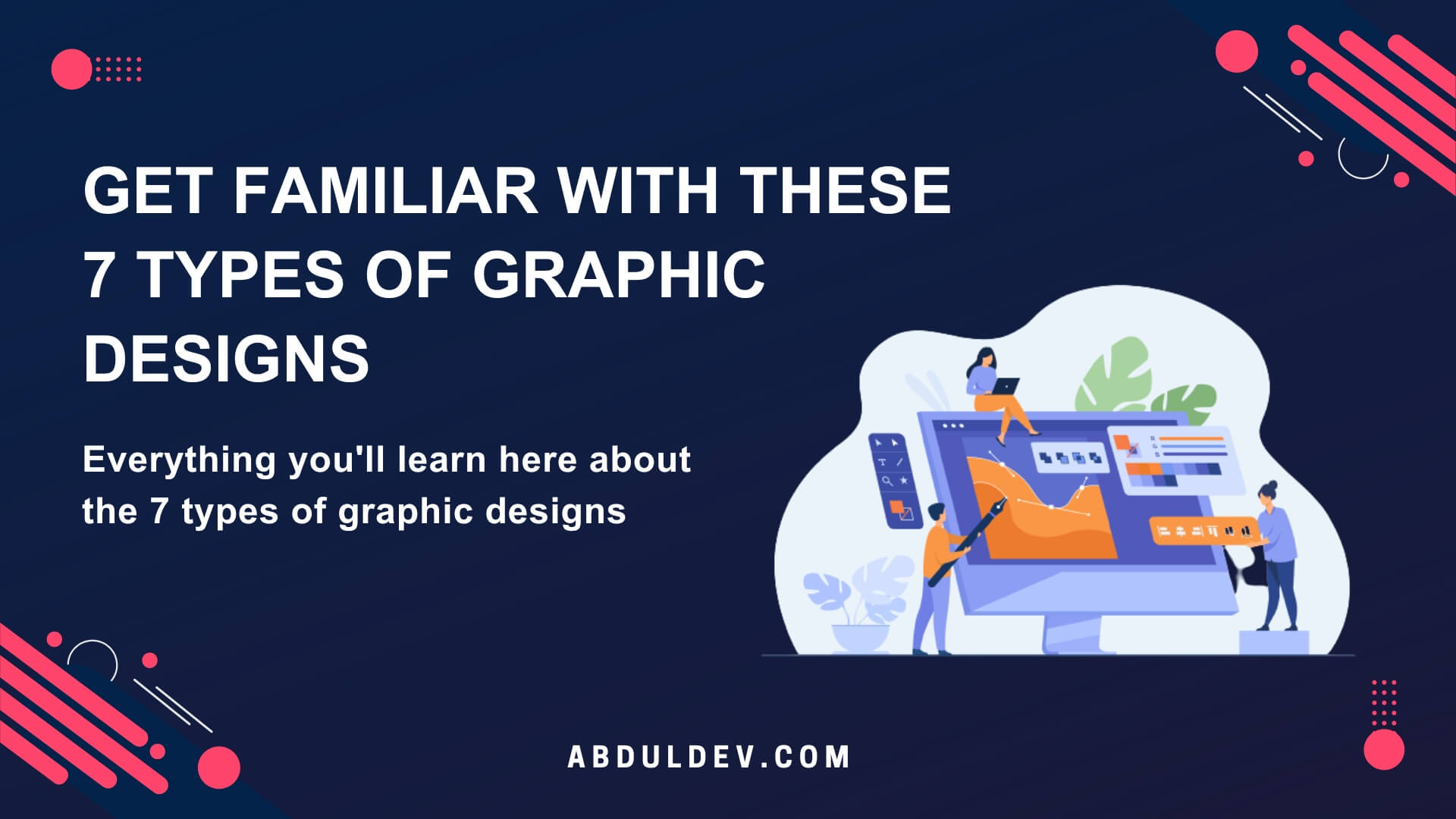
Graphic design is a vast and versatile field that plays a critical role in communication, branding, and marketing. Whether you’re a budding designer, a business owner, or someone curious about design, understanding the different types of graphic designs can help you appreciate their importance and applications. Here, we explore the seven main types of graphic design and their unique characteristics.
What is The Meaning of Graphic Design?
Graphic design is the art and process of creating visual elements that communicate messages to an intended audience. It is essential to almost every aspect of modern life, from corporate branding to product design, advertising, and even video games.
A graphic designer combines text, images, and other design elements to create a visual language that communicates ideas and information. They work in various settings, including advertising agencies, design firms, and corporate design departments.
A graphic designer is also responsible for choosing the right color palette, selecting the best design elements, and ensuring the design communicates the intended message. Whether it’s a user interface, motion graphics, or digital format, every aspect must work harmoniously to create a compelling visual identity that resonates with the target audience.
In summary, graphic design creates visual elements that communicate messages and ideas. From corporate branding to advertising design, every aspect of graphic design plays a crucial role in building brand identity and communicating messages effectively whether a product designer or motion designer, understanding visual design basics is critical to creating visually compelling designs that resonate with your audience.
The Best 7 Types of Graphic Design: Must know
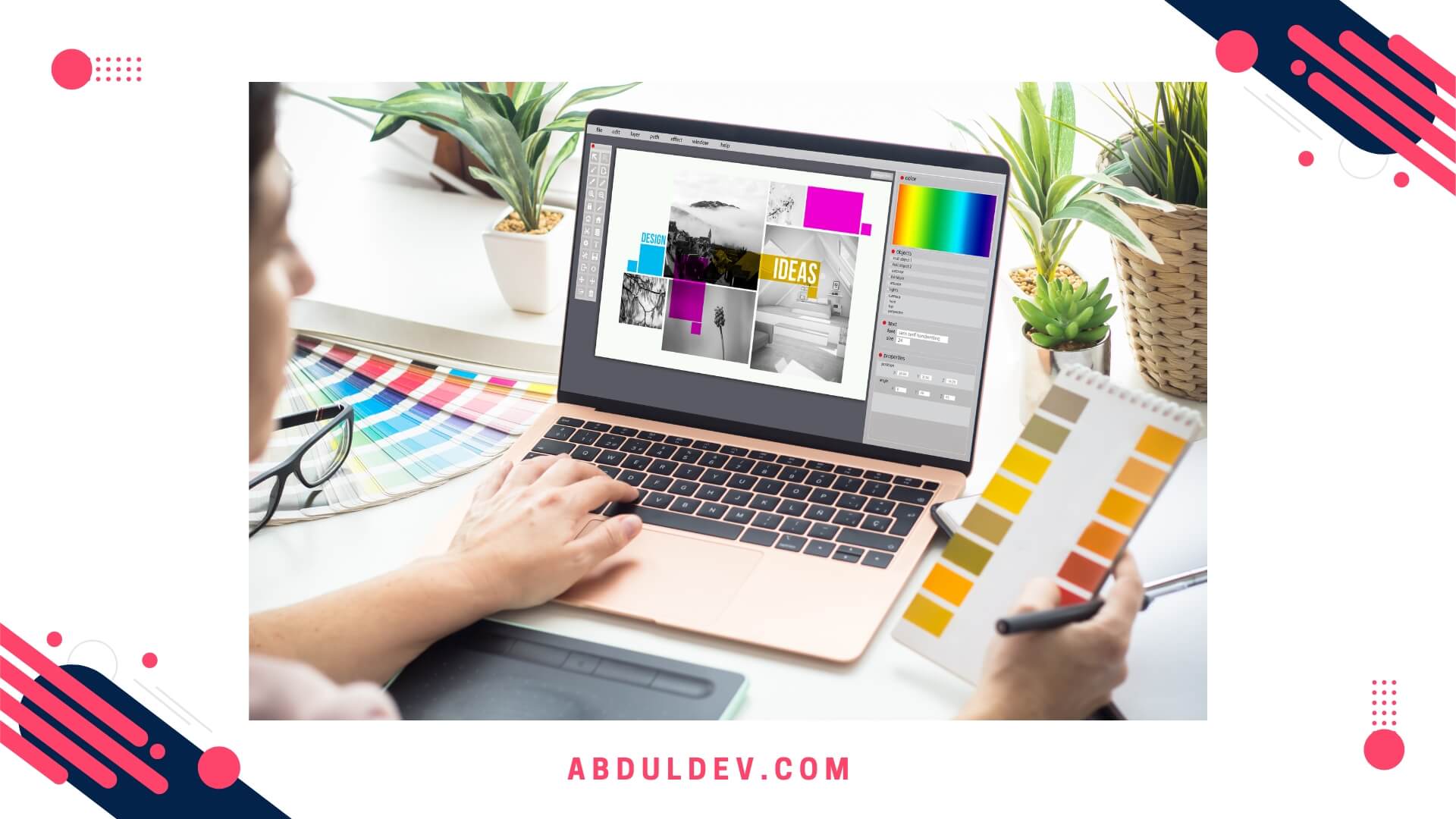
If you’re looking to get into the world of graphic design, it’s important to know the different types of innovation out there. Each type serves a unique purpose and requires specific skills and knowledge to master. In this post, we’ll explore the best 7 types of graphic design that every aspiring designer should know.
- Visual Identity/Brand Design: Visual identity design is all about creating a consistent look and feel for a brand or organization. This includes designing logos, business cards, stationery, and other marketing materials communicating the brand’s message and values. Identity graphics are key in creating a brand’s recognition.
- Advertising & Marketing Design: Advertising and marketing design involves creating eye-catching graphics and visual content that grab people’s attention and promote a product or service. This could include making social media graphics, banner ads, or print advertisements.
- Publication Design: Publication design focuses on designing books, magazines, newspapers, and other printed materials. This type of design requires knowledge of typography, layout, and graphic elements to create engaging and visually appealing content.
- Packaging Design: Packaging design is about creating attractive and functional product packaging. This could include designing labels, boxes, or even product displays. A successful packaging design should be visually appealing, practical, and reflect the brand’s values.
- Motion Graphics Design: Motion graphics design involves creating animated graphics and visual effects for video content. This could include designing opening credits, lower thirds, or even entire videos.
- Environmental Design: Environmental design involves creating graphics for physical spaces, such as signage or wayfinding systems. This type of design requires understanding spatial design, color theory, and typography to develop effective communication through graphic elements.
- Web & App Design: Web and app design focuses on creating user-friendly interfaces for websites and mobile applications. This type of design requires an understanding of user experience, typography, and visual hierarchy to create engaging and easy-to-navigate digital experiences.
Overall, each type of graphic design requires a unique set of skills and knowledge. By familiarizing yourself with these 7 types of graphic design, you can better understand which design area you want to pursue and what skills you’ll need to succeed.
Visual Identity/Brand Design
Visual identity or brand design refers to the visual representation of a company or organization. It includes the logo, color scheme, typography, and other visual elements that comprise the company’s brand image. This type of design is crucial for businesses as it creates a distinct impression that customers can associate with the company.
A successful visual identity design must accurately represent the company’s values, goals, and mission. The design must also be flexible enough to adapt to print, digital, and advertising mediums. A good visual identity design can help build brand recognition, attract new customers, and create a consistent brand image across all channels.
When working on visual identity or brand design, designers typically start by researching the company’s history, target audience, and competitors. They then develop a mood board, which includes visual inspiration, color palettes, and typography choices. Once the mood board is finalized, designers create the logo, brand guidelines, and other visual elements to make up the brand identity.
Examples of successful visual identity designs include the Nike swoosh, the Coca-Cola script, and the Apple logo. These brands have developed a strong visual identity instantly recognizable to consumers. By investing in a good graphic identity design, businesses can stand out in a crowded marketplace and create a lasting impression on their customers.
Advertising & Marketing Design
Advertising and marketing design involves the creation of visual materials for promotional purposes. It uses design elements to communicate the intended message to the target audience. Advertising and marketing designers create designs that will attract customers, engage them, and ultimately persuade them to take action, whether purchasing a product or subscribing to a service.
One of the most crucial aspects of advertising and marketing design is understanding consumer psychology. Advertising and marketing designers should understand their audience, needs, and preferences. By doing this, they can create strategies that resonate with their audience and increase the likelihood of conversion.
In advertising and marketing design, visuals are key. The design should be eye-catching, attractive, and memorable. Colors, typography, and imagery are all important factors that can help create a strong brand identity and connect with the audience emotionally.
In addition to traditional print and digital advertisements, advertising and marketing design also involves the creation of promotional materials such as brochures, flyers, and banners. These materials must be visually appealing, readable, and convey the intended message effectively.
Overall, advertising and marketing design plays a crucial role in the success of a business. It helps to create brand awareness, attract new customers, and retain existing ones. Companies can increase their chances of success in the competitive marketplace by creating visually appealing and effective designs.
Publication Design
Publication design creates designs for print media such as books, magazines, newspapers, and other publications. The goal of publication design is to make the content visually appealing. This type of graphic design requires a deep understanding of typography, layout, and composition to create visually striking designs.
Publication designers have a broad range of responsibilities, including selecting appropriate typefaces, formatting images and graphics, and arranging the content aesthetically pleasingly. A successful publication design requires careful attention to detail, creative problem-solving skills, and strong communication with writers, editors, and publishers.
A well-designed publication should draw the reader’s attention and engage them in the content. The use of typography and layout can make a significant difference in how a reader perceives the content. Publication designers must consider the typeface, font size, and spacing to create a cohesive and visually pleasing layout.
Moreover, color is an essential element in publication design. It differentiates sections, highlights key points, and adds visual interest to the content. The use of color in a publication design should be intentional and meaningful.
In summary, publication design is a specialized field that requires a keen eye for detail, creative problem-solving skills, and the ability to communicate with writers and editors effectively. It is an essential aspect of the publishing industry that can distinguish between a successful and mediocre publication.
Packaging Design
Walking down the aisles of your local grocery store, you may notice that certain products stand out more than others. It’s the eye-catching colors or the unique shape of the packaging that grabs your attention. That’s the power of packaging design at work.
Packaging design is all about creating an appealing and functional package for a product. It involves considering factors such as the product’s target audience, the shelf space available, and the practicality of the box.
Good packaging design can help a product stand out from the competition, communicate important information about the product, and even influence the buyer’s decision to purchase. That’s why packaging design is an important aspect of the overall branding strategy for many companies.
A good packaging design will consider several factors, such as material, design, durability, and user-friendliness. For example, a packaging design for a high-end cosmetic product would be different from a packaging design for a product that needs to be stored in a freezer.
Additionally, packaging design also plays a role in sustainability. With the increasing awareness of the impact of packaging on the environment, more and more companies are turning to sustainable materials and design practices for their packaging. This includes reducing the amount of plastic used in packaging and making it easier for consumers to recycle.
Some great examples of successful packaging designs are Coca-Cola’s iconic glass bottle, Apple’s minimalist packaging for its products, and the innovative packaging design for the environmentally friendly Method cleaning products.
Whether through creative design, eco-friendliness, or functionality, packaging design is important in capturing consumer attention and influencing purchase decisions. So, next time you’re shopping, look at the packaging designs around you and see how they impact your choices.
Motion Graphics Design
Motion graphics design is a type of graphic design that combines graphic design elements with animation and sound design to create compelling visual stories. This type of design is typically used in television and film, but it can also be used in digital media and advertising.
Motion graphics designers use software programs like Adobe After Effects and Cinema 4D to create moving graphics that bring still images to life. These moving graphics can be used to communicate complex ideas and concepts in an engaging, easily digestible way for viewers.
Some common examples of motion graphics design include animated logos, explainer videos, and social media videos. These types of graphics are often used to explain a company’s mission or product, showcase new features or products, or tell a brand’s story.
In addition to being visually appealing, motion graphics also have the added benefit of being easy to share and distribute across various platforms. This makes them an effective tool for reaching a wider audience and increasing brand awareness.
If you’re interested in pursuing a career in motion graphics design, it’s important to have a strong understanding of design principles and animation techniques. You should also be familiar with industry-standard software programs like Adobe After Effects and Cinema 4D.
Overall, motion graphics design is an exciting and dynamic field that offers a lot of potential for creative expression and career growth. Whether you’re interested in working in television and film or digital media, there are plenty of opportunities to use motion graphics to tell compelling visual stories and make a lasting impact on your audience.
Environmental Design
Environmental design is a type of graphic design that focuses on creating visually appealing spaces for people to live and work in. This design area includes everything from designing interiors of buildings to planning entire cityscapes. The main goal of environmental design is to improve the aesthetic appeal of a room while ensuring that it is functional and meets the needs of those who will use the space.
Some environmental design elements include color, light, and texture to create a visually engaging space. This type of design also focuses on placing furniture and other items within an area to maximize its functionality. In addition, the environmental design also considers the space’s impact on the environment and works to reduce negative effects, such as using sustainable materials.
Environmental design is used in various applications, from designing office spaces to creating public parks and outdoor areas. It is also used in the planning and design of public transportation systems, roadways, and other urban infrastructure.
One of the most important aspects of environmental design is understanding how people interact with their environment. By understanding how people use a space, designers can create more effective and engaging designs that meet the needs of their intended audience.
Overall, environmental design is a vital aspect of graphic design that is important in creating visually appealing and functional spaces. If you are interested in this field, many resources can help you learn more about environmental design and the techniques and principles used in this area of graphic design.
Web & App Design
In today’s digital age, having a strong web and app presence is crucial for any business or individual. This is where web and app design comes into play, which is the process of creating visually appealing and functional digital platforms. Here are some key points to keep in mind regarding web and app design.
Firstly, it’s important to remember that a website or app needs to be user-friendly and easy to navigate. This means having clear call-to-action buttons, logical layouts, and an intuitive user interface. Users should be able to easily find what they’re looking for, whether it’s information about a product or service or a way to contact the company.
Secondly, web and app design needs to consider the different devices and screen sizes people will use. This means creating responsive designs that adapt to various screen sizes, whether a smartphone, tablet, or desktop computer. It’s also important to ensure that the website or app loads quickly and doesn’t require too much data usage.
Regarding aesthetics, web and app design should be visually appealing and reflect the brand or individual’s identity. This can include choosing a color scheme, typography, and imagery consistent with the brand’s overall style. However, it’s important not to sacrifice functionality for aesthetics – the design should always serve the user’s needs first and foremost.
Overall, web and app design is crucial to any digital strategy. Working with a skilled designer or design team who can create a visually appealing and functional platform that will help achieve business or personal goals is important. With the right approach, a website or app can be a powerful tool for reaching and engaging with audiences online.
Benefits of Knowing Types of Graphic Design
- Clear understanding of your design needs: Knowing the types of graphic design helps you identify the types of graphic design that suit your specific needs. It will also help you to articulate your requirements to the designer or agency you’re working with.
- Better collaboration: Knowledge of graphic design will help you collaborate better with designers. This is because you can better discuss your design needs and understand their approach.
- Efficient communication: Knowing the language of graphic design will help you communicate more efficiently with designers, avoiding any miscommunication or confusion that may arise.
- Improved results: When you understand the different types of graphic design, you are more likely to get the desired results. This is because you can provide better guidance and feedback throughout the design process.
- Save time and money: Knowing the types of graphic design can help you save time and money. It enables you to avoid unnecessary revisions and redesigns, making the process faster and more efficient.
- Staying ahead of the curve: Knowing the latest trends in graphic design can help you stay ahead of the curve and give your brand a fresh and modern look.
Conclusion
Graphic design is a fascinating field with diverse opportunities. By understanding these seven types and their applications, you can better appreciate how design influences everyday life and business success. Whether you’re a designer or a business owner, investing in quality graphic design can make a world of difference.
FAQs
Yes, many graphic designers specialize in particular areas, such as branding and logo design, web design, packaging design, or motion graphics, based on their interests and expertise.
To learn more about various types of graphic design, you can explore online tutorials, enroll in graphic design courses or degree programs, follow design blogs and forums, and study the work of experienced designers in the field.
Typography design focuses on the art and arrangement of fonts and typefaces to create visually appealing and legible designs. It plays a crucial role in conveying messages and setting the tone of the invention.
Logo design involves creating unique and memorable visual representations of a brand or company. It uses symbols, icons, and typography to create a recognizable brand identity.
Illustration design creates visual representations, often hand-drawn or digitally created, to accompany or enhance a design. Illustrations are widely used in editorial design, children’s books, and advertising campaigns.
UI (User Interface) design focuses on designing the visual elements of a digital product, such as buttons, menus, and layouts, to create an intuitive and user-friendly interface. UX (User Experience) design focuses on enhancing a product’s overall user experience and usability.
Share on Social Media
Related Articles

10 Best Freelancing Skills to Learn for Students in
Discover the top 10 best freelancing skills for students in 2025. Learn valuable, in-demand skills like Web Development, Graphic Design,
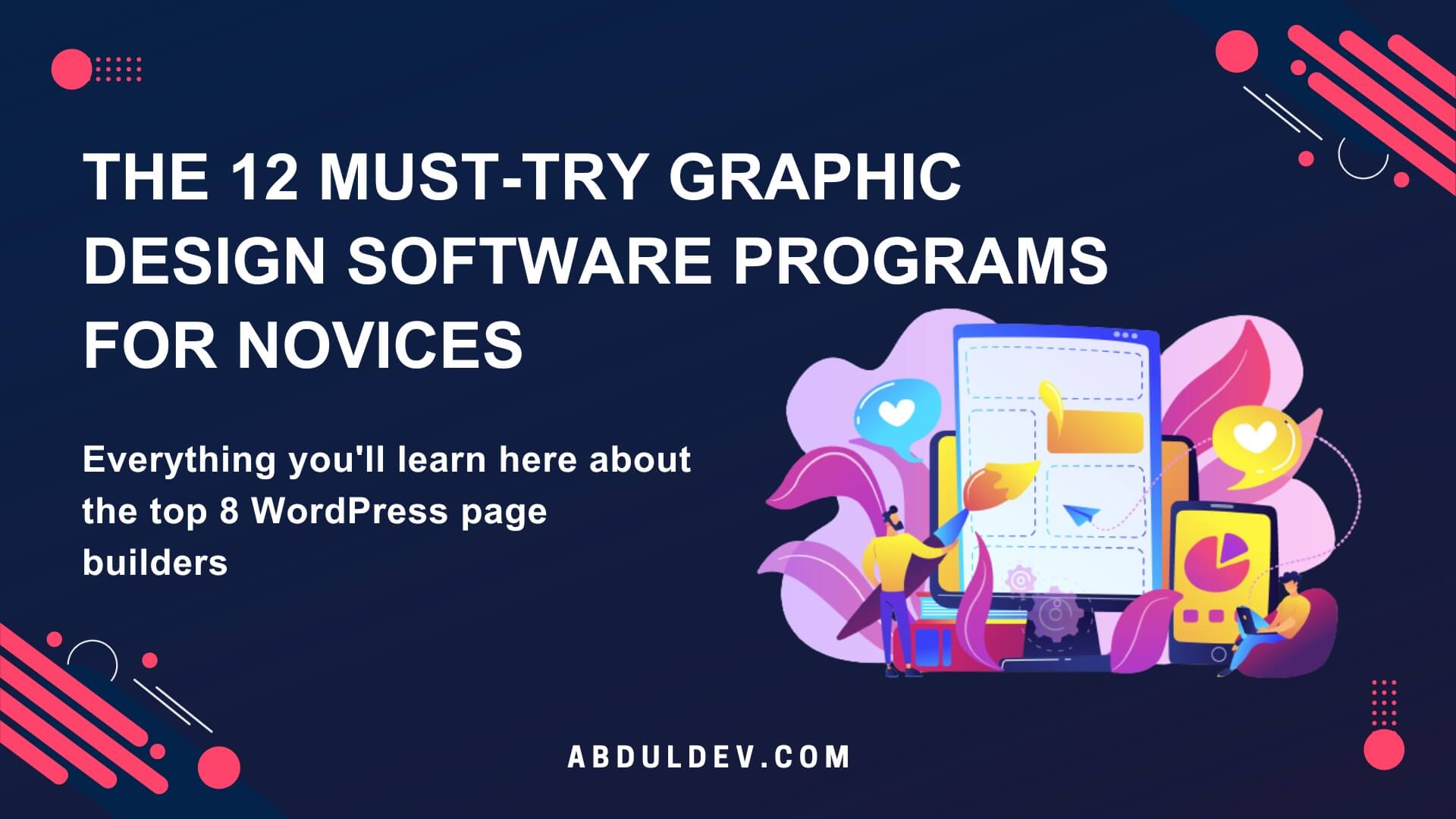
The 12 Must-Try Graphic Design Software Programs for Novices
Do you want to know the best graphic design software? Check out my article, which comprehensively guides you to finding
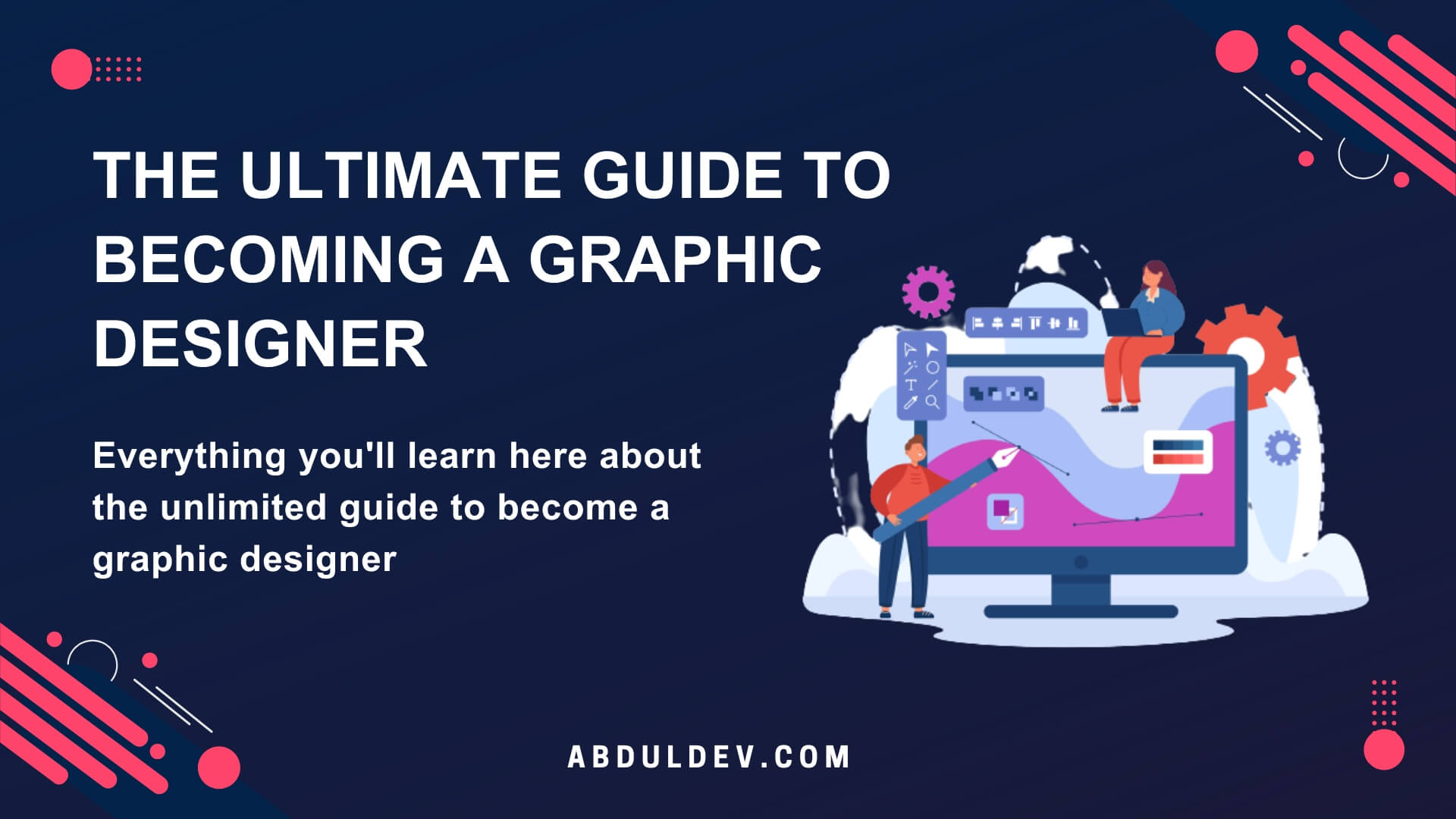
The Ultimate Guide to Becoming a Graphic Designer
Are you looking for How to Become a graphic designer? Look no further! My article will help you to be
At AbdulDev, our mission is to support learners and developers by sharing helpful, easy-to-follow tutorials on modern web technologies like HTML, CSS, JavaScript, ReactJS, and PHP.
Useful Links
Copyright© 2025 | abduldev


